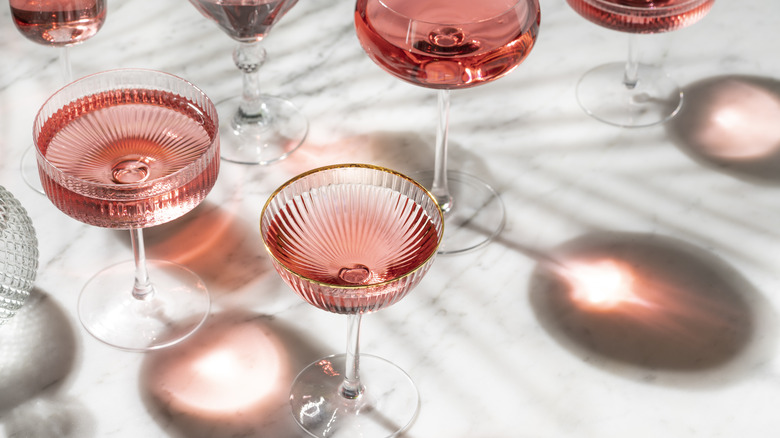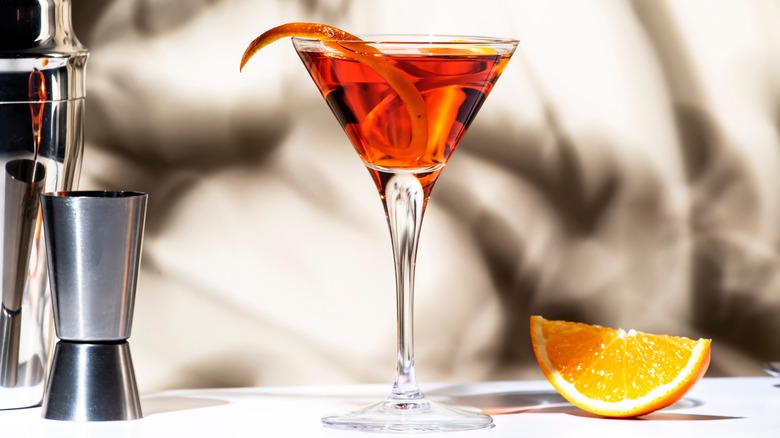Never Skip This Step When Making Martinis With Fruit
While the classic martini in its purest form is known for its singular flavor profile spotlighting gin or vermouth, the overall martini category is an excellent blank canvas for building complex cocktails with all kinds of different flavors. Within that category is an entire subcategory especially appealing during warm-weather months: Fruit martinis. There's the famous appletini, currently making a comeback, and then there's a variation for pretty much every fruit — martinis with peaches, blueberries, kiwis, strawberries, blood oranges, and more. These drinks are straightforward for home bartenders, promising bright, sweet, tart, and refreshing results. There's just one crucial step on the way to perfection. Jayson Goldstein, Food and Beverage Director at YOTEL Boston's Vela Seaport and Deck 12 explained the secret to us.
"You need to shake it well with a lot of ice and double strain the drink to get all the pulp out for a smooth cocktail," Goldstein says. Using fresh fruit is the best way to get the best flavors. But this means even after a good muddling, you'll have solids left, whether it's bits of fruit or pulp. The same goes even if you're using fresh fruit juices, which can also have pulp. It's essential to shake the cocktail vigorously and long enough to get the flavors of the fruit into the alcohol, and then strain twice to efficiently keep all solids out of your drink.
How to effectively shake and strain your fruit martinis
A proper shake — usually about 30 seconds with high-quality ice — achieves a lot for a cocktail. The solid ice aggressively stirs the liquid mixture around, evenly blending ingredients with different textures, which is how it helps incorporate fruit or fruit juice with spirits. It chills the drink, too, of course. Furthermore, the action whips oxygen into the cocktail, creating one cohesive, velvety consistency. While standard gin or vodka martinis are usually stirred, this is why martinis with fruit components must be shaken, and shaken well.
Once you've blended, chilled, and aerated your fruit martini, a double strain is key for ensuring there are no bits in your finished cocktail and that you have that smooth, velvety drink you just shook. What double-straining means is that the cocktail goes through two different strainers on its way from the shaker to your glass. The first is a Hawthorne strainer, which you use to keep ice and fruit out of finished shaken cocktails. Julep strainers are also sometimes used, but they're more for stirred cocktails and a Hawthorne will better keep your fruit out. The second strainer is a small fine mesh strainer, which will catch any sneaky solids that somehow make it through the Hawthorne. It's double the reassurance that no solids land in your cocktail, essential for tipples with fruit. A good shake and a double strain promise to deliver beautifully smooth, fruity martinis.

